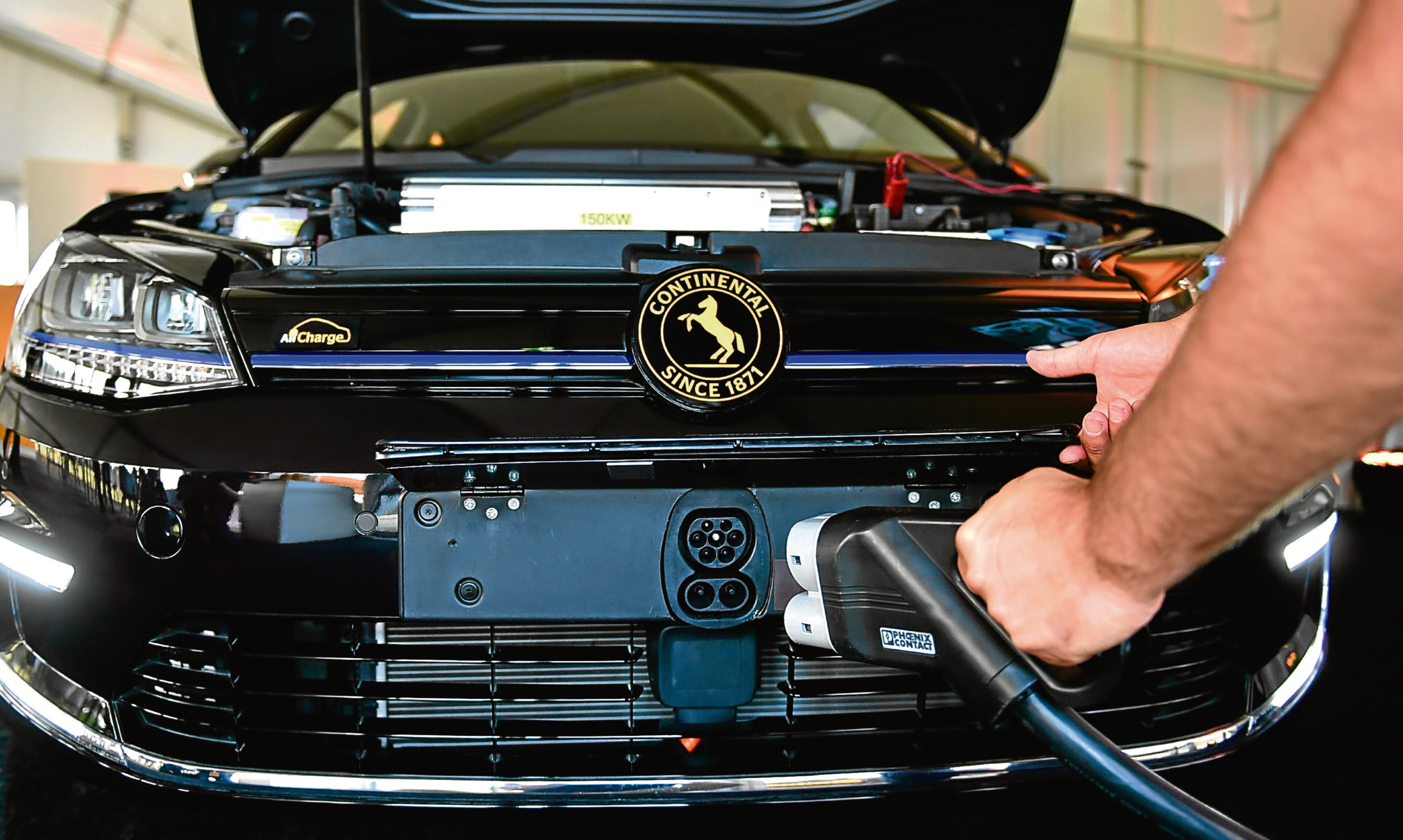Sir, – How fantastic it was to read of the Levenmouth Community Energy Partnership and Logan Energy’s hydrogen project.
For anyone who listened to Professor Jim Al-Khalili’s Life Scientific Programme on Radio 4 where scientists discussed the future of fuel and came to the conclusion that as long as the problems associated with hydrogen could be overcome it is by far the best option, it is delightful to see this desirable goal being achieved by a Scottish firm and a community partnership.
I have found the headlong rush to develop electric cars and buses somewhat frightening when one thinks of the huge number of vehicles on the roads, the number of charging point needed and gloomy stories of blackouts when the National Grid is not able to cope.
All this seems to point to a future reliance on nuclear power with all its millions of years of nuclear waste. To have an alternative up and running (whose only by-product I believe is water) is an astonishing achievement and one which should be shouted from the rooftops.
Surely this is of global significance and to have this innovation led by Scots, as so often in the past, is doubly significant for our Scottish economy.
Huge congratulations to all concerned and more power to their elbows.
Mary Ann Cockburn.
Pitkerro Road,
Stobswell,
Dundee.
Overloading National Grid
Sir, – The Government is stopping the sale of petrol and diesel cars from 2040 and switching to electric vehicles.
Where will the additional electricity come from? Electric vehicles will place unprecedented strain on the National Grid and peak demand for electricity would add 30 gigawatts to the current peak of 61GW, an increase of 50%.
It would require another 10,000 wind turbines or 9.6 Hinkley nuclear power stations costing £20 billion each and taking 20 years per plant to build.
Creating charging points for electric vehicles will cost billions.
The loss of tax from fuel duty and vehicle emissions tax will be many billions of pounds.
Estimates reveal that this madness will cost more than £200 billion.
Will income tax be raised to unacceptable levels or is road charging being considered?
Politicians listen to the green brigade when they should be listening to engineers and scientists.
Meanwhile the rest of the world runs on petrol and diesel.
Clark Cross.
138 Springfield Road,
Linlithgow.
Fuel policy has not been tested
Sir, – When Boris Johnson was asked by Jeremy Clarkson where he thought all the electricity would come from to supply millions of electric cars, he replied, pointing to an electric socket, “out the wall, of course”.
Unfortunately, it is not going to be that simple.
The announcement by Holyrood and Westminster that all new petrol and diesel cars will be banned from 2040 seems a bit like putting the cart before the horse.
Unless there is in place adequate capacity for electrical generation to provide the power, the enterprise could end up as a complete shambles.
Although most politicians probably support the move to electric vehicles and renewable energy, arguably they have not demonstrated that they’ve given serious thought or have a plan on how the change from fossil fuel to electric will be achieved in such a relatively short timescale.
It has been calculated that at least 10,000 more wind turbines at a cost of £1.3 million per turbine would be required with alternative back-up to address the intermittency of wind and solar power or an additional nuclear input of 10 Hinkley-sized reactors at £20 billion each and that does not include subsidies, running costs or decommissioning.
There is also the provision of charging points to consider and whether or not battery technology can improve to the point where convenience and performance equals or surpasses that of the internal combustion engine.
Although electrification of our transport system may be the way forward, the enormous cost in delivering this strategy, its environ-mental impact and risks surely must be taken into account first.
But both Holyrood and Westminster look as though they are blundering on, with their ambitious, untested and unproven proposals into uncharted waters without a compass.
Iain G Richmond.
Guildy House,
Monikie.
We do need to cull seagulls
Sir, – Yes we should cull seagulls.
Kirkcaldy, Dundee and Perth have far too many of these aggressive pests.
Not only did a Kirkcaldy woman suffer a coronary after an attack but people in Perth have suffered.
I was dive-bombed going for the paper. A neighbour had to fend them off with an umbrella.
An old lady was mowing her lawn and was attacked.
A friend had them nesting on her roof and could not go out without them going for her.
People should be fined for feeding them.
A cull of these pests is the only answer.
Maybe if a child or a baby in a pram was hurt something would be done. A cull of these gulls is the answer, after all we cull deer, kill wasps and poison rats.
Isabel Wardrop.
111 Viewlands Road West,
Perth.
Folly of UK’s EU approach
Sir, – The best explanation of Britain’s relationship with the EU was provided by an episode of Yes Minister in 1980 when Sir Humphrey Appleby told his boss: “Britain has had the same foreign policy objective for at least the last 500 years: to create a disunited Europe. In that cause we have fought with the Dutch against the Spanish, with the Germans against the French, with the French and Italians against the Germans, and with the French against the Germans and Italians. We tried to break the EU up from the outside, but that didn’t work. However now we’re inside we can make a pig’s breakfast of the whole thing.”
Sadly Sir Humphrey didn’t spell out for our less perceptive xenophobes that leaving the EU would be a huge mistake and unite the whole of Europe against us.
Rev Dr John Cameron.
10 Howard Place,
St Andrews.
